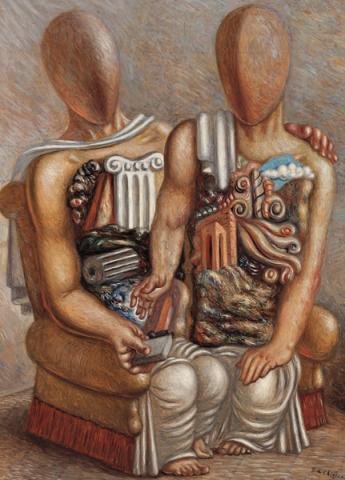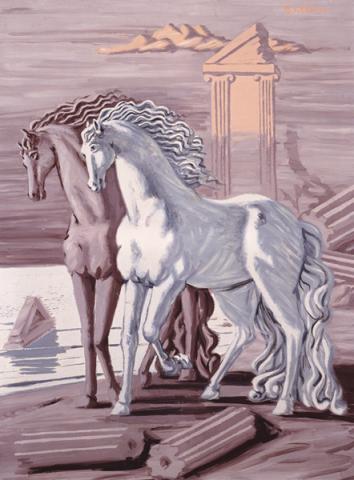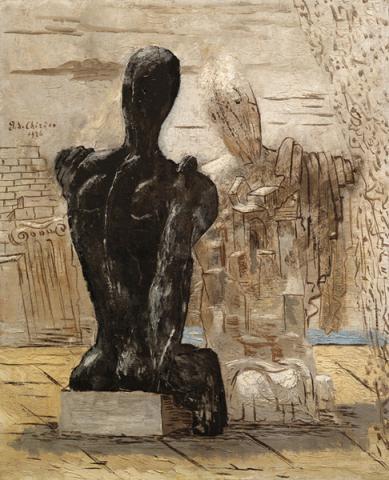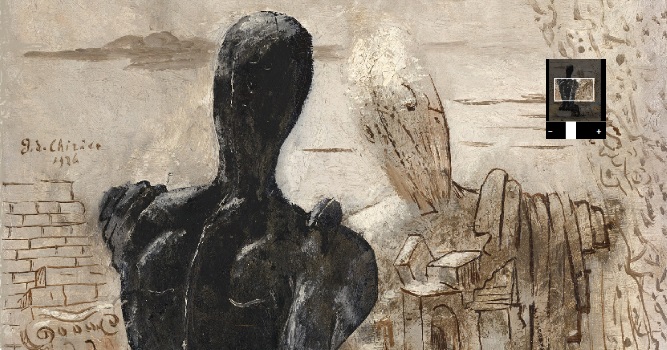Giorgio de Chirico (Volos, Grecia, 1888 - Roma, 1978)
Giorgio de Chirico was born on the 10th July 1888 in Volos, Greece, where his father was an enginner employed in the construction of the railway line from Athens to Salonica.
He studied at Athens and then at Monaco in Bavaria, where he attended the Academy of Fine Art, modelling himself on the pictorial texts of Bocklin and Klinger and on the philosophical writings of Schopenhauer, Nietzsche and Weininger.
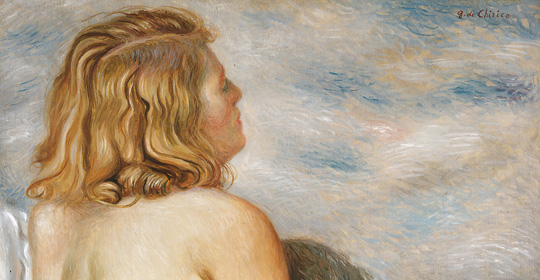
In 1908 he painted his first canvases under the influence of Bocklin (The Wounded Centaur, the Battle between Hoplites and Centaurs, everything from 1909). He began to paint “metaphysical” subjects: The Enigma of an Autumn Afternoon (1910), The Enigma of the Oracle. In 1911 he moved from Florence to Turin and then to Paris. There, on the advice of Apollinaire and with recommendation of the painter Pierre Laprade, he took part in the Salon d'Automne. During this period he created the famous series depicting Italian Piazzas, in which space appears rarefied by the silent presence of statues and the near absence of people.
In 1915 he was recalled to Italy for the war and sent to Ferrara, where he met Carlo Carrà, Ardengo Soffici, Giovanni Papini e Filippo de Pisis. These were the most important years for his metaphysical phase, during which Internal Metaphysics, Great Metaphysics, the Hector and Andromache series, The Troubadour and the Troubled Muses were painted.
An interest in renaissance and baroque painting starts to become apparent, and in Sacred Fishes, painted in 1919, he seems far from metaphysical painting. In 1924 he took part for the first time in the Venice Biennale. In Paris he met and married the Russian actress Raissa Gurievitch Krol. In 1929 he made a definitive return to Italy, establishing Rome as his home. Riassa left and in 1931 he married Isabella Pakszwer, who stayed at his side for the rest of his life.
In the Thirties he exhibited in Milano, Prague, Brussels, and at the Venice Biennale. In 1936 he took part in an exhibition dedicated to Fantastical Art, Dadism and Surrealism at the Museum of Modern Art in New York.
After the Second World War he collaborated with the Municipal Theatre of Florence, the Rome Opera and La Scala in Milan. He worked more and more on illustrations.
He took part in the Roman Quadriennales in 1951, 1955, 1959, 1965 and 1972.
In the Sixties de Chirico started to create sculpture in bronze, mainly on mythological themes.
In 1970 a major retrospective of his work was organised at the Royal Palace in Milan. 180 works were displayed, including paintings, sketches and sculpture, dating from 1909 to 1970.
In 1978 he died in Rome in his house on Piazza di Spagna, which is now open to the public.



























